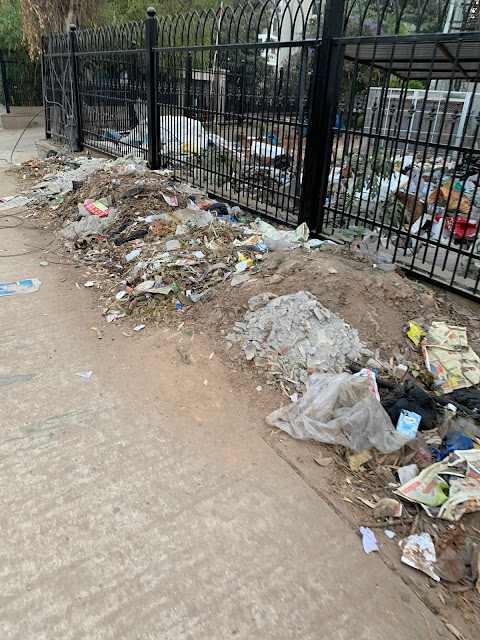Waste Management Indian Style
This is a garbage blog - all about garbage, trash, rubbish, waste. And possible will be garbage itself, but here goes.
With over a billion people living in India, the volume of garbage created daily is astonishing. In fact, I found an article form 2017 that stated India produced 100,000 tonnes of garbage daily - which is massive. Unfortunately, due to the lack of infrastructure and a systemic cultural problem, this volume will not decrease any time soon. However, the volume of garbage is not the only issue - it is the disposal of that waste that causes the most concern.
You cannot avoid seeing this massive volume of garbage when you live here. In particular in somewhere like Bangalore ,where the city has grown at such astronomical rates over the last 15 years, the government process for waste management just hasn't been able to cope. The local villages and slum areas have no waste collection options and their only choice is to dump their daily waste right outside their doors and in other common spaces. The roadsides are completely 'littered' with piles and piles of garbage. These massive mounds of food, clothing, plastic, dead animals etc are breading grounds for 'who knows what' and the smell is beyond anything you can imagine.
The waste is not just limited to the roadsides, they are often dumped in the small lakes that dot Bangalore and these are now so polluted that no wildlife are living there. When these piles of waste get so big that no more can bed added to the pile, they are then burned by local villagers. This creates toxic fumes from all of the non-recyclable products in there, and this pollutes the air and water creating an even bigger issue. Often we wake up to the smokey haze created from these fires.
When we lived in Hyderabad, the daily garbage collection (when it actually occurred) was just a 'dump' of everything - there was no recycling, no segregation - just bags and bags of garbage for burning. However, the community we have moved in to in Bangalore has a very different approach to waste management. I have included the very detailed, and very strictly adhered too, guide to garbage. It's been an interesting few weeks getting used to the daily Wet and Sanitary waste collection, and quite the learning curve for the men of the house.
Some of the very specific items for segregation had a few laughs in our house:
- finger and toe nails
- condoms
- hair
- used hairbands
- dental floss
- dead pests
- broken pins
Anyway, we are getting used to the process and I have to admit it really does cut down the day to day garbage when you are segregating to this level. We have 2 small coloured bins (green and red) and then a box for all the 'Dry Waste' (recycling). And I am happy to say the recycling box is always full.
The critic I have of this is the fact that not 50 metres from my door, in all directions outside of the community, it is a 100% different picture. I have taken a few pictures of what it looks like directly outside the gates of the community for your comparison. So, how do we change the imbalance that is so obvious ? I am all for doing our small thing to help with the big issue but I am concerned that the pure volume and the scale of the education and plan for the local population is just too big. I know that the national government talks about it a lot but it just isn't a priority for the local areas.
 |
| Our 2 little bins for daily Wet and Sanitary west :) |
 |
| Just outside the gate and this pile of garbage has just been lit - the stray dogs enjoy the warmth on a winters morning |
 |
| and another smouldering pile of plastic and toxic items |
 |
| most of the 'footpaths' (if you can call them that) are so dangerous that you end up walking on the road. The garbage in these drains leads directly to the local lakes - and boy is it stinky !! |
 |
| outside another housing complex |
 |
| This is very common at the junctions of community streets |
 |
| and more and more and more |







Comments
Post a Comment